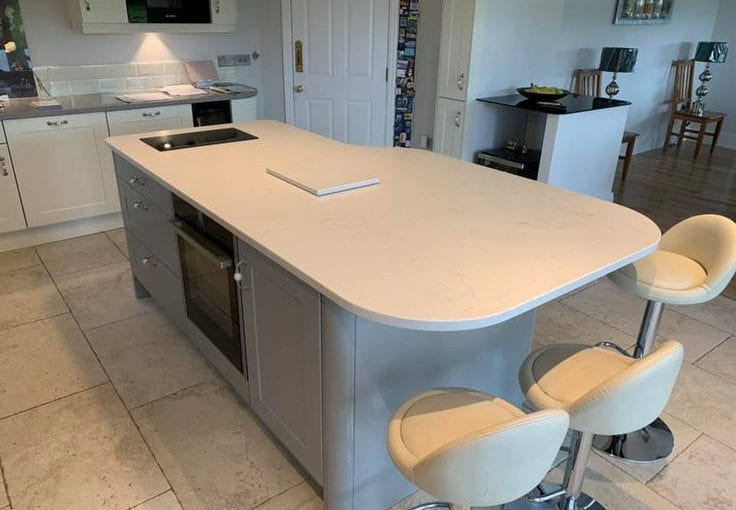Quartz is a completely natural substance composed of a white or colourless mineral. Quartz countertops are a type of manufactured stone, as opposed to natural stone like marble, granite, and soapstone.
While they do contain natural quartz stone, additional resins, colors, and other materials have been added to improve their strength and style. Continue reading to find out how it’s created, why it rivals natural stone, and how it differs from other artificial surfaces.
QUARTZ MAKING PROCESS
In terms of weight, quartz work tops can be made up of 93% to 95% quartz and 5% to 7% resin. Using Italian Bretonstone technology, which combines crushed quartz or other natural stone aggregates like granite and marble with a polymer resin mix, engineered quartz is created. The material is devoid of air before being heated and formed into a slab. It may also include additional components like glass, mirror, or ceramic to give it a unique look.
Additionally, colour can be added during the process to help give the quartz countertop a bold or neutral appearance. One of the features that attracts both homeowners and designers to man-made quartz is the wide variety of colour choices.
Natural stone countertops and quartz countertops are different in a number of ways. Natural stone’s erratic patterns and movement appeal to certain people, while quartz’s uniformity appeals to others. What you see is exactly what will be installed in your kitchen or bathroom, whether it’s the veining, glitter, or colour depicted in a sample. Additionally, you can choose items that resemble stone, such as marble-looking quartz.
Due to its resistance to mould, heat, scorch, stains, and scratches, it is also practically indestructible. It is more healthier to choose this product, especially in the kitchen, because its non-porous surface makes it 99.9% bacteria-free, whereas porous genuine stone, like real marble, will soak up every spill and splash.
It also takes very little upkeep, which is an added benefit. Quartz doesn’t require sealing; natural stone requires it every few months or once a year. It is also easy to maintain with just a soft sponge, water, and dish soap for more difficult dirt.
